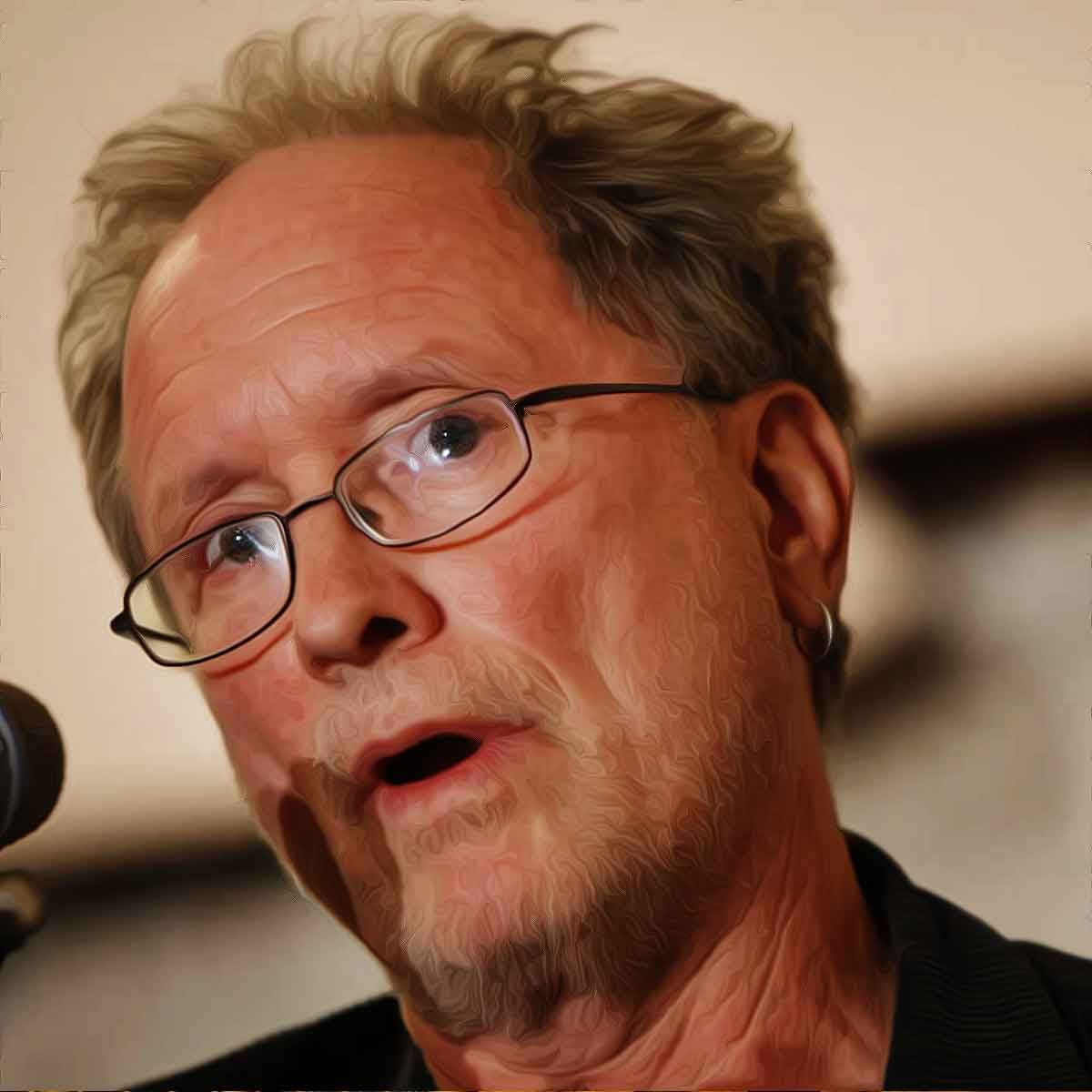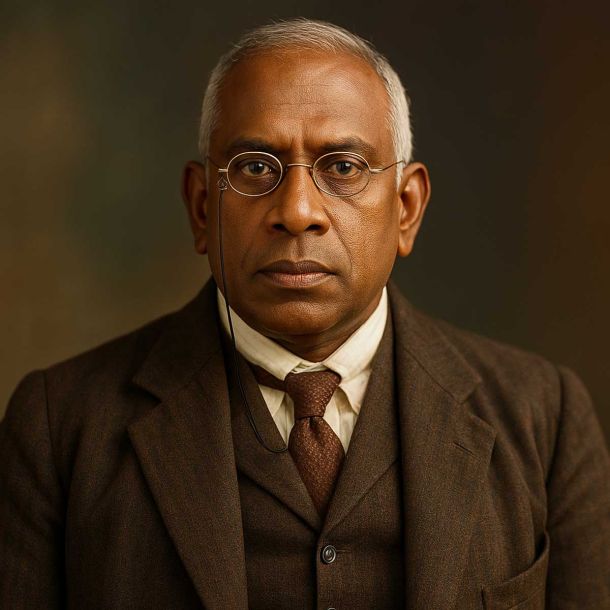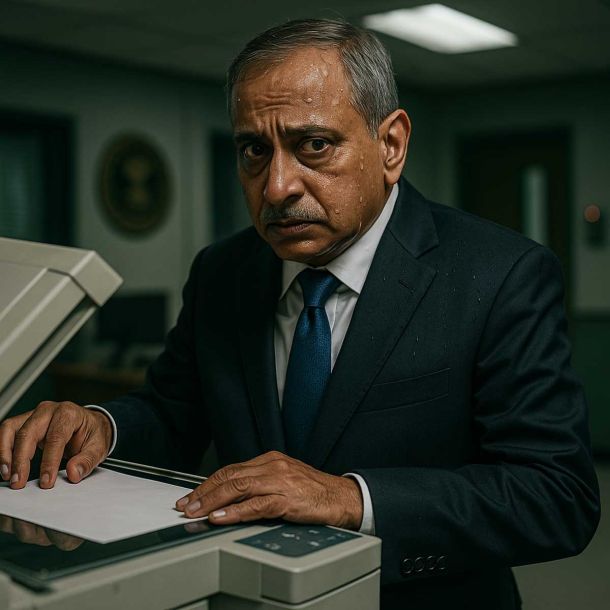MORE COVERAGE
“Kill all rich people. Break their cars and apartments. Bring the revolution home, kill your parents”: Prof Bill Ayers of early childhood education & senior university scholar of Illinois, Chicago went underground to become America’s first terrorist cult

“Kill all rich people. Break their cars and apartments. Bring the revolution home, kill your parents”: Prof Bill Ayers of early childhood education & senior university scholar of Illinois, Chicago went underground to become America’s first terrorist cult.
When The Professors was first published in February 2006, it was greeted by cries of outrage from the academic Left. The author was denounced as a reincarnation of Joseph McCarthy and his book as a “blacklist,” although no evidence existed to support either claim and both were the opposite of the truth.1 Far from being a “blacklist,” the text explicitly—and in so many words—defended the right of professors to teach views that were unpopular without fear of political reprisal. The author also publicly defended the First Amendment rights of Ward Churchill, the most notable case of a professor under attack for his political views.
These are expressions of a mentality that seeks to suppress rather than engage an opposing point of view. This is the way political operatives think, not the way academics and scholars should conduct themselves. It is antithetic to the scientific method, which academic professionals are obligated to follow. The scientific method pursues the truth disinterestedly, submits hypotheses to opposing perspectives, and tests claims against the evidence. This is the very basis of academic freedom, which is freedom within a professional discipline governed by the scientific method.
Despite the unscrupulous attacks on The Professors, the facts revealed in its text are real. The book’s argument has not been answered and will not go away. In fact, it is gaining ground. In May 2006, the faculty senate at Penn State University passed a resolution to apply the existing academic freedom protections to students for the first time.31 This was a direct result of the academic freedom campaign of which The Professors is an expression. The Penn State academic freedom policy states:
It is not the function of a faculty member in a democracy to indoctrinate his/her students with ready-made conclusions on controversial subjects. The faculty member is expected to train students to think for themselves, and to provide them access to those materials which they need if they are to think intelligently. Hence in giving instruction upon controversial matters, the faculty member is expected to be of a fair and judicial mind, and to set forth justly, without super cession or innuendo, the divergent opinions of other investigators.
|
Professor Regina Austin, William A. Schnader Professor of Law, University of Pennsylvania
— Believes the black community should accommodate criminal behavior and find a “good middle ground between straightness and more extreme forms of lawbreaking.”
— “Law is useful as a supplement to activism.”
Regina Austin is the William Schnader Professor of Law at the University of Pennsylvania, a feminist and “a leading authority on economic discrimination and minority legal feminism,” according to her university website. Professor Austin is a proponent of Critical Race Theory, a school of law that combines Marxist and racial perspectives. Pioneered by racial ideologue Derrick Bell, Critical Race Theory regards white racism as a permanent structural dimension of American society. Critical race theorists advocate compensatory, race-based preferences for African Americans in employment, education, and—in Professor Austin’s case—criminal justice.
Long an outspoken advocate of racial separatism, Professor Austin has made race/class/gender conflict the centerpiece of her courses, which view legal issues through the narrow prism of identity politics. Characteristic of Professor Austin’s approach is her popular seminar, “Advanced Torts: Intentional Torts and the Intersection of Race, Gender & Class.” The course promises to teach students to analyze legal disputes “from the perspective of groups of subordinate status,” a category that Professor Austin subdivides into “race, ethnicity, gender, sexual orientation, age, religion, or class.”
The intention of “Advanced Torts” is to encourage students, especially minority students, to regard the law, not as a body of rules that apply equally to all citizens but rather as a malleable concept, subordinate to one’s perceived identity interests. If the testimony of Austin’s former students is any measure, the course has been successful on this score. One student who took “Advanced Torts” was enthused that it “took a different, more cultural look at Torts,” one that “resonated personally with me, especially as a Latina.”
Central to Professor Austin’s “Advanced Torts” course is her claim that minority status confers the privilege of interpreting the law as one pleases. In her published articles Professor Austin has exhorted the black community to reject the distinction between lawful and unlawful activity, regarding this distinction as one of the imposed strictures of an oppressive white society. Accordingly, Professor Austin pours scorn on such “traditional values” as “conformity to the law,” which she insists will “inten-sif [y] divisions within the black community.” Austin has called on African Americans to engage in outright lawbreaking, which she calls “hustling,” but which in fact amounts to any number of acts of thievery licensed by Professor Austin’s demands for social justice. Thus, “clerks in stores [who] cut their friends a break on merchandise, and pilfering employees [who] spread their contraband around the neighborhood,” are encouraged by Professor Austin to occupy the “good middle ground between straightness and more extreme forms of lawbreaking.”
Asked in a 1999 interview to describe how she views her role as a legal scholar, Professor Austin answered that it “should start with the premise that black people are at the center of the universe and go on from there.”60 This view, Professor Austin explained, was the “common characteristic of the body of scholarship that is classified as critical race studies,” which she has long promulgated in her academic writings. “I rely fairly heavily on culture as being the base on which you begin to build so that your authorities come from the culture and not outside of the culture,” Professor Austin explained. So extreme is Professor Austin’s insistence on the primacy of culture over a law that she claims minority communities require an “alternative source of [legal] authority.”
Still another salient feature of Professor Austin’s courses is their rejection of any pretense of scholarly objectivity, in favor of an aggressively political agenda. Such is the case with her seminar, “Environmental Racism.” The seminar’s official description discloses that it “will explore the problems and principles that fuel the environmental justice movement.”
Among the political agendas of the course listed by Professor Austin are “supporting the environmental racism claim” and championing “environmental/occupational health issues such as pesticide poisoning and sweatshop conditions.” Students are to take trips to sites “which have been impacted by environmental injustice.”
The powerful Marxist core of Critical Race Theory surfaces in Professor Austin’s lament at the way “resources are removed from access by the market,” resulting in “lesser quality environments” for minorities and the poor. Professor Austin’s solution is to ensure that the privatization of wealth is “unraveled in a way that produces privatization or quasi-privatization for people who are the least well off.” Toward this end, Professor Austin sees “law [as] useful as a supplement to activism. . . . I’m an institutional actor.”
Professor Austin concedes that her activist teaching style and preference for political opinion over legal doctrine have not always been well received. Asked whether she had encountered resistance to her approach, Professor Austin allowed that she had, and proceeded to enumerate some of the grievances raised by disaffected students: “Much too liberal, much too loose, not doctrinal, policy is empty, it’s all very confusing.”
Research: Jacob Laksin
|
Professor Bill Ayers, Distinguished professor of early childhood education and senior university scholar, University of Illinois, Chicago campus
— A leader of the domestic terrorist group The Weathermen in the 1970s
— “I don’t regret setting bombs. I feel we didn’t do enough.” (Ayers statement 2001)
Along with his wife Bernardine Dohrn, Bill Ayers was a 1960s radical and leader of the “Weatherman” faction of Students for a Democratic Society, which in 1969 went underground to become America’s first terrorist cult. Named from a Bob Dylan song lyric, Weatherman has been described by Ayers as “an American Red Army.” In 1969, the Weather Underground issued a formal “Declaration of War on AmeriKKKa” and attempted to incite white student radicals to engage in terrorist activities that would provoke a race war in AmeriKKKa (always spelled with three capitalized “K’s”).
|
White radicals would shed their “white skin privilege” to aid Third World peoples in plundering the ill-gotten wealth of the United States. Ayers summed up the nihilism of Weathermen’s ideology as follows: “Kill all the rich people. Break up their cars and apartments. Bring the revolution home, kill your parents.”
The Weather Underground managed to bomb the U.S. Capitol building, New York City Police Headquarters, the Pentagon, and the National Guard offices in Washington, D.C., among many other targets. In 1970, three of their members blew themselves up in a Manhattan townhouse where they were making a bomb they planned to set off at a social dance for young military recruits and their dates at Fort Dix, New Jersey.
|
The FBI was unable to catch Ayers, Dohrn and their cohorts who were protected by the networks of the “progressive” Left, including their expensive lawyers, for five years until the organization dissolved through internal conflicts.67 They surfaced in 1980 and received no serious jail time for their crimes, being let off on a technicality that they had been “improperly” surveilled.
Both went back to college, where their political comrades, now tenured faculty, helped them to embark on new careers. Dohrn became a law professor at Northwestern University and a prominent member of the American Bar Association. Ayers became a professor of early childhood education and a senior university scholar at the University of Illinois, Chicago. Neither of them modified their political views one iota.
Professor Ayers has written a series of books about parenting and educating children, including: To Become a Teacher; City Kids; City Teachers. His most recent book, Fugitive Days, however, is a memoir of his Weatherman exploits. In a chaotic text, Professor Ayers recounts his life as a 1960s radical, his role as an organizer of the 1969 “Days of Rage” riots in Chicago, his tenure as a Weatherman leader, and his terrorist campaign across America, and his hatred for the United States. “What a country,” Ayers once said. “It makes me want to puke.” When interviewed shortly after surfacing from the terrorist underground in a kindergarten where he was already teaching, Ayers commented, reflecting on his fortunes: “Guilty as hell, free as a bird! America’s a great country.”
|
A substantial portion of Professor Ayers’s book Fugitive Days discusses his activities in building bombs and deploying explosives, as though he were writing lessons for radicals to come. Professor Ayers boasts that he participated in all the above-mentioned bombings with the exception of the fateful townhouse explosion in which his girlfriend Diana Oughton was killed. Recounting his bombing crusade, Ayers states, “There’s something about a good bomb... Night after night, day after day, each majestic scene I witnessed was so terrible and so unexpected that no city would ever again stand innocently fixed in my mind. Big buildings and wide streets, cement, and steel were no longer permanent. They, too, were fragile and destructible. A torch, a bomb, a strong enough wind, and they, too, would come undone or get knocked down.”69 So the terrorists who flew planes into the World Trade Center also calculated.
On September 11, 2001—the day of the terrorist attacks—the New York Times ran a profile of Ayers to mark the publication of his book. In an unintended irony, the Times quoted Ayers to this effect about his own terrorist career:
“I don’t regret setting bombs. I feel we didn’t do enough.” Ayers and the Weathermen were responsible for 30 bombings aimed at destroying the defense and security infrastructures of the United States. Of the day he bombed the Pentagon, Professor Ayers wrote in his memoir: “Everything was absolutely ideal ... The sky was blue. The birds were singing. And the bastards were finally going to get what was coming to them.” When reflecting on whether or not he would use bombs against the U.S. in the future, the Senior University Scholar writes, “I can’t imagine entirely dismissing the possibility.”
To summarize the academic career of Professor Ayers: An ex-commander of the terrorist Weather Underground was hired, out of all possible candidates, for a faculty position in the Department of Education at the University of Illinois. This required a vote of the entire department. Ayers was then promoted to Associate Professor, a tenured position, and then again to full Professor, each requiring a vote of the entire department. Finally, he was made “Distinguished Professor and Senior University Scholar,” an appointment reflecting the endorsement of the University’s central administration, an honor not widely shared.
|
This occurred at a time when, as he made clear to the New York Times, Professor Ayers was unrepentant about his former terrorist activities and wished he had planted more bombs. Not surprisingly Professor Ayers’s “scholarship” reflects these sentiments. Professor Ayers has become honored among peers at Northwestern for books such as A Kind and Just Parent (1998), in which he argues that we must overcome our “prejudices” concerning violent juvenile offenders. In another book, Zero Tolerance:
Resisting the Drive for Punishment in Our Schools (2001), Professor Ayers argues against expelling disruptive children from classrooms, especially if they are black or Latino. In Teaching Towards Freedom: Moral Commitment and Ethical Action in the Classroom (2004), the unrepentant former terrorist lectures us on “the evocative lessons about education and humanity of Pablo Neruda [a Communist bureaucrat] and Malcolm X,” in order to explain what students should be for—” and what they should be against.” This pattern suggests either that Northwestern University officials could find no better-qualified candidate than an unrepentant terrorist to teach early childhood education and to join the ranks of its tenured faculty (and then to be honored as first among his peers) or that there is an affirmative action program at Northwestern for political radicals.
Research: John Perazzo
 Support Us
Support Us
Satyagraha was born from the heart of our land, with an undying aim to unveil the true essence of Bharat. It seeks to illuminate the hidden tales of our valiant freedom fighters and the rich chronicles that haven't yet sung their complete melody in the mainstream.
While platforms like NDTV and 'The Wire' effortlessly garner funds under the banner of safeguarding democracy, we at Satyagraha walk a different path. Our strength and resonance come from you. In this journey to weave a stronger Bharat, every little contribution amplifies our voice. Let's come together, contribute as you can, and champion the true spirit of our nation.
 |  |  |
| ICICI Bank of Satyaagrah | Razorpay Bank of Satyaagrah | PayPal Bank of Satyaagrah - For International Payments |
If all above doesn't work, then try the LINK below:
Please share the article on other platforms
DISCLAIMER: The author is solely responsible for the views expressed in this article. The author carries the responsibility for citing and/or licensing of images utilized within the text. The website also frequently uses non-commercial images for representational purposes only in line with the article. We are not responsible for the authenticity of such images. If some images have a copyright issue, we request the person/entity to contact us at This email address is being protected from spambots. You need JavaScript enabled to view it. and we will take the necessary actions to resolve the issue.
Related Articles
- Rare footage of Pakistan Army surrendering to Indian Armed Forces after the humiliating defeat in 1971 war: Vijay Diwas
- Wikipedia dismisses Love Jihad as a conspiracy theory by Hindus, but claims reverse Love Jihad against Muslims is real
- Five LeT terrorists planned bomb blast at Darbhanga railway station, had visited Pakistan several times: NIA files charge-sheets
- 6 dead, multiple injured, including a 9-month-old baby & a pregnant woman in a stabbing attack at Sydney's Bondi Junction Westfield; Police have not ruled out terrorism as they investigate the tragedy, which saw a lone assailant fatally shot by an officer
- ‘Pakistan wants no hostility with India for 100 years, but rapprochement with India not possible when Modi govt is in power’: Pakistan to unveil its first-ever National Security Policy
- "Injustice anywhere is a threat to justice everywhere": A cloud of fear hangs over Kulgam as Indian Army soldier Javed Ahmad Wani, mysteriously vanishes, traces of blood in his car hint at a chilling possibility, this cowardly act demands strict actions
- Dangers of losing our identity: Guru Tegh Bahadur forgotten and Aurangzeb being glorified
- Philadelphia Mass shooting in USA: 3 dead, 11 injured after multiple attackers open fire at crowded street using automatic weapons which are easily available in US stores, No arrests till now, police looking for surveillance footage
- 'Anti-Hindu Delhi riot was remotely supervised by Umar Khalid just like 9/11 conspirators,’ prosecutors oppose Khalid’s bail plea, says 'Riot key conspirators were like entertainers who resorted to damrubaazi to attract crowd'
- ‘Execute Hamas terrorists including my father, no exceptions’: Son of Hamas terrorist asks Israel to not go easy on Hamas with negotiations, says Hamas is waging psychological warfare, using children, infants, human shields, still playing the victim card
- Prophecies of Jogendra Nath Mandal getting real after seventy years of his return from Pakistan
- "Khalistani ideology is mainly a catalogue of blunders": Punjab Police recovered incriminating material including holograms of Anandpur Khalsa Fauj, a firing range built by Amritpal Singh, and weapon training videos from Tejinder Singh alias Gorkha Baba
- More videos of Maulana Usmani has surfaced showing how he openly called for violence and said, ‘CDS Bipin Rawat’s death was Allah’s work, Muslims should be prepared to kill or die’
- "Valor is stability, not of legs and arms, but of courage and the soul": Intense Srinagar operation by the courageous J&K police leads to the successful detention of 43 ex-terrorists & separatists, preventing a revival of the Hurriyat Conference & JKLF
- How Africa’s traditional religions were exterminated by Islam and Christianity
Related Articles
Twitter Coverage
Satyaagrah
Written on
Satyaagrah
Written on
Satyaagrah
Written on
Satyaagrah
Written on
Satyaagrah
Written on




















